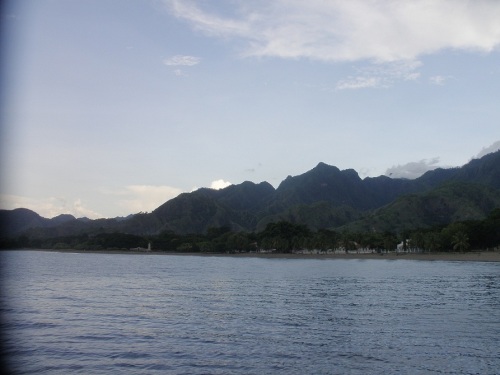-
Over the past ten years, achievements have been made in many sectors in Timor-Leste. Schools and hospitals both in the capital and the districts have been rebuilt and many government institutions for delivering goods and services have been put in place.
East Timor predicted to be one of the top ten fastest growing economies for 2011. That news comes as the World Bank recently predicted a 15 percent growth rate and a decline in poverty by 9 percent in the foreseeable future.
On its track to development gender equality promotion is a priority.
Following the Millennium Development Goals, the Timor-Leste target for gender equality and empowerment women is “eliminate gender disparity in primary and secondary education, preferably by 2005, and in all levels of education no later than 2015”
United Nations report is clear: “Very likely to be achieved, on track”
“At primary education proportion of girls was higher than that of boys. According to 2004 population and housing census in Timor-Leste, the net primary enrolment rate is 75% for boys and 73% for girls. But this rate was decreasing at secondary and tertiary levels. At tertiary level there were only 83 girls out of 100 boys. This reflects that gender inequality still exists.
Moreover, since 2001 the ratio of literate women to men has been quite promising, reaching approximately 96%. The percentage increased slightly to 97% in 2004, but declined sharply to 93% in 2007. Achieving 100% literacy among women by 2015 is possible if informal education is made available to all in a more ambitious manner.
The share of women in wage employment in the non agricultural sector presents a different picture, however. This indicator shows that the chance of women to involve in labour market is still very low, where male dominates. Based on the data sources women contribution in the non-agricultural sector has only increased slightly from 35% in 2001 to 36% in 2007. Moreover, women in urban areas are more likely to get employed in non-primary sectors than men. Finally, an indicator of the empowerment of women can be seen in the proportion of seats held by women in national parliament, which was 28% in 2007”
As it can be seen, achievements have been made, but a lot of work is still required.
The Constitution of the Democratic Republic of Timor-Leste supports freedom from sex-based discrimination. Equality between women and men is a fundamental right, and a necessary condition for the achievement of its objectives of growth, employment and social cohesion.
For this reason, the Government itself it committed to the principle of equality between men and women seeking to ensure the integration of a gender perspective in the development of strategic, policies, programs and legislation within the Government.
Taking into account the importance of equality between women and men the Ministry of Economy and Development has created a gender cabinet in order to mainstream a gender perspective into the design, analysis, planning implementation, budget, monitoring and evaluation of local and national policies and programs.
Ministry of Economy and Development plays an important role in promoting the development in rural areas, where the gaps between men and women are deeper.
For this reason the Gender Cabinet is in charge to support the creation of districts gender working groups, identifying key members and priority actions in order to improve coordination between districts and promote rural community participation.










![comunica%C3%A7%C3%A3o[1] comunica%C3%A7%C3%A3o[1]](https://xisideias.files.wordpress.com/2009/07/comunicac3a7c3a3o1.gif?w=500) John Rawls, was bron in February 21, 1921, and died in November 24, 2002. He was an American philosopher and a leading figure in moral and political philosophy.
John Rawls, was bron in February 21, 1921, and died in November 24, 2002. He was an American philosopher and a leading figure in moral and political philosophy.